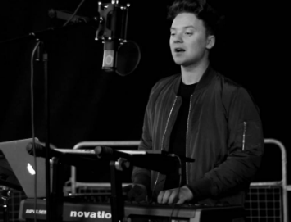From Love to Tears: Why Do We Want to Listen to Sad Songs More and More?

Most of the decades in popular music have been defined by genres, formats, or geography but the previous one was perhaps most shaped by platforms. From Spotify, through Apple Music, YouTube, Amazon, and Jay-Z’s Tidal, streaming tracks are included in the singles and albums charts. Social networks broke down the walls, creating direct communication between artists and fans.
The result of all this is that music has become truly global, and genres have begun to mutate and merge. Latino and K-pop became the main genres, while electronic dance music entered the mainstream. Hip hop has risen to a new level and has become more marketable and sellable than rock for the first time in history.
During this decade, among other names, several young artists stood out, such as Adele and Ed Sheeran, who each personified the present and future of popular music in their own way. There are newer forces emerging: Billie Eilish, Tones and I…
Why Does Sad Music Make Us Happy?
Let’s take a look at one trend… Did you notice that there are more and more sad songs climbing up the top charts in the world? So, why do we like to listen to sad songs? Has it always been that way or has the music industry changed a lot lately… or maybe we have changed?
This trend is visible by looking at the unique interactive chart presenting the most popular songs with characteristics of each track on music charts from 22 different countries during the last decade. The above-mentioned Adele and Ed Sheeran are in the top 10 on most of these international charts, especially in Western European countries.
The songs of these two singers founding their way there have low energy (a criterion representing a perceptual measure of intensity and activity measured from 1 to 100), which is between 33 (Adele’s “Someone Like You”) and 65 (Ed Sheeran’s “Shape of You”).
The answer, that is, the mystery that bothers the listener’s world – why does sad music makes us happy – has been solved by some of the most promising (and lyrically-minded) scientists.
Using artificial neural networks (a component of artificial intelligence meant to simulate the functioning of a human brain) that distinguish the emotional “color” of words, they analyzed the lyrics of the most popular songs. They came to an interesting conclusion – pop music becomes darker and darker.
The number of words like “madness”, “disgust”, “fear”, and “sadness” in the lyrics has increased 5 times in the last few decades. While the words associated with happiness, self-confidence, and freedom, popular back in the 1950s, began to fade abruptly, giving way to rather depressing scenarios.
Who Has Actually Changed – the Listeners or the Musicians?
Another interesting fact is that, by analyzing the top of the tops of the most popular songs, it’s not possible to determine how the behavior of musicians has changed. It’s considered that consumer preferences have changed. Modern listeners seem to want to see the glass half empty and experience their “three minutes of drama” daily with the help of music.
Not everything is as bad as it sounds. Some research shows that a daily dose of tears can be helpful. In 2015, scientists found that most people classify music associated with sadness and pain as more beautiful.
In addition, sad lyrics often help us to cope with our own negative emotions and encourage a kind of catharsis. Sad melodies encourage us to introspect, that is, they completely spontaneously make us remember very personal aspects of life and analyze them thoroughly.
Scientific research has found that even when we cry over our playlist, we feel… pleasure. The heartbeat returns to normal and breathing becomes deeper, as during the use of antidepressants and sedatives.




